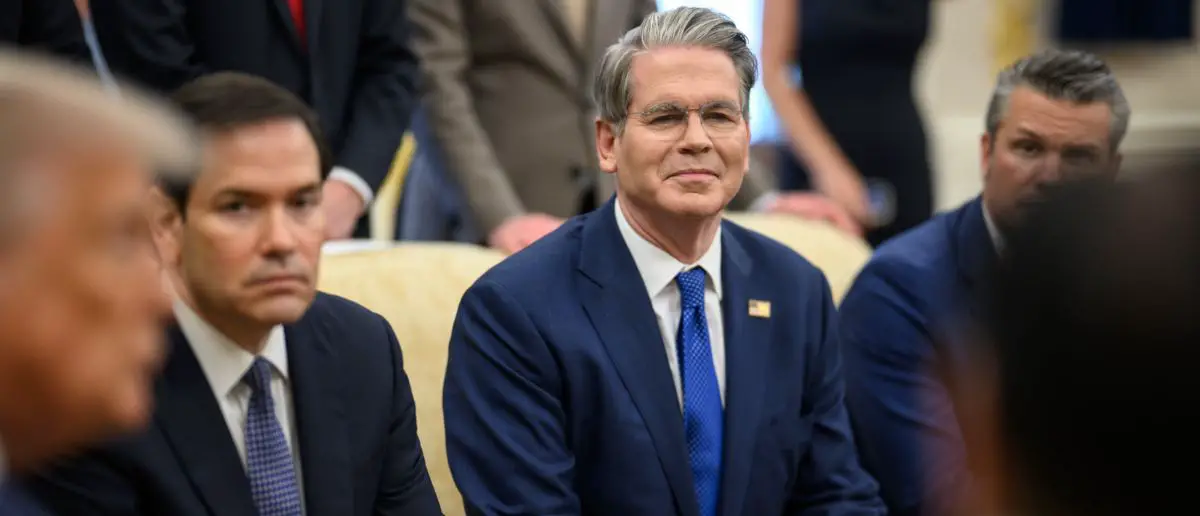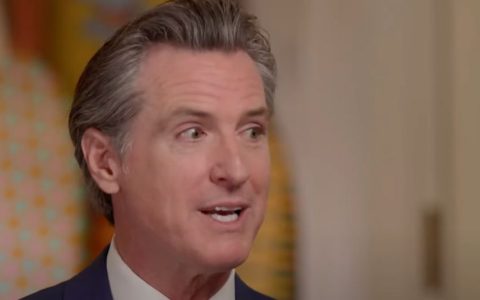
The President has made a move for the history books. And now he’s getting his due.
Because Treasury Secretary Scott Bessent broke down Trump’s genius in a stunning statement.
Bessent: Trump’s Tariff Revenues to Reduce Federal Debt, Bolster U.S. Economy
U.S. Treasury Secretary Scott Bessent announced on CNBC’s Squawk Box on Tuesday, that revenues from President Donald Trump’s sweeping import tariffs are expected to significantly exceed his initial $300 billion estimate, with the funds primarily allocated to reducing the $37.2 trillion federal debt rather than issuing rebate checks to Americans.
Bessent emphasized that he and Trump are “laser-focused” on lowering the deficit-to-GDP ratio, stating, “I’ve been saying that tariff revenue could be $300 billion this year. I’m going to have to revise that up substantially. We’re going to bring down the deficit to GDP. We’ll start paying down the debt, and then at that point that can be used as an offset to the American people.” This approach aims to strengthen U.S. fiscal health without direct cash distributions.
Debt Reduction Priority
Bessent highlighted the potential for tariff revenues to stabilize the economy, noting that the U.S. could return to the “good, low-inflationary growth” of the 1990s. He attributed economic challenges, particularly in housing and among lower-income households with high credit card debt, to elevated interest rates.
“The real problem here is we’re seeing some distributional aspects to the higher rates, especially in housing and for lower-income households with high credit card debt,” he said.
A Federal Reserve rate cut, which Trump has advocated, could spur home building and lower housing prices within one to two years, Bessent added. The U.S. Census Bureau reported a 5.2% increase in single-family home construction starts in July, despite high mortgage rates and economic uncertainty.
Tariff Impact and Federal Reserve Policy
Trump’s tariffs, effective since April, have generated $100 billion in revenue through July, according to Treasury Department data. However, they have prompted the Federal Reserve to maintain steady interest rates due to concerns about potential inflation, which remains above the Fed’s 2% target.
Bessent argued that tariff-related price increases are likely one-time adjustments, with manufacturers absorbing much of the cost: “What we are seeing thus far is the manufacturers are eating it.”
Recent job market softening has raised expectations for a 25-basis-point rate cut in September, which has already lowered mortgage rates slightly. Bessent previously supported a 50-basis-point cut, believing it could further stimulate housing.
Economic Benefits for the U.S.
The focus on debt reduction aligns with Trump’s “America First” agenda, which Bessent described as prioritizing U.S. industrial capacity and job creation.
By channeling tariff revenues—potentially exceeding $300 billion annually—toward the federal debt, the administration aims to reduce the fiscal burden on future generations while addressing economic challenges like housing affordability.
Social media sentiment on X shows support among some users for using tariffs to tackle the debt, with posts citing Bessent’s estimate as a step toward fiscal responsibility. The strategy positions the U.S. to maintain economic influence globally while minimizing domestic financial strain.





